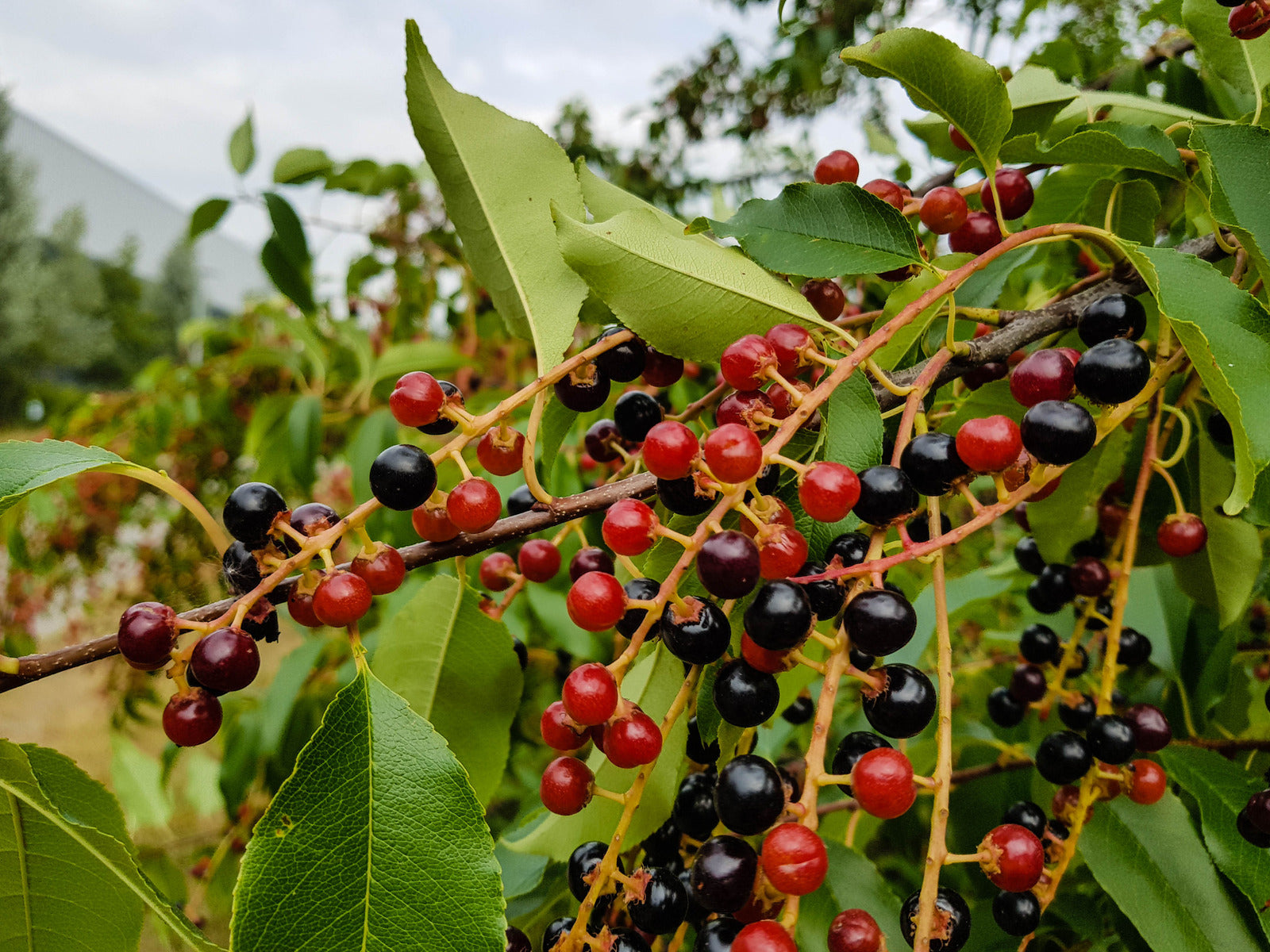1
/
of
1
PRUNUS SEROTINA / BLACK CHERRY
- Regular price
-
$43.99 CAD - Regular price
-
- Sale price
-
$43.99 CAD
Shipping calculated at checkout.
Couldn't load pickup availability
Delivery Fees
Delivery Policy
Enjoy FREE delivery on all orders over $149!
For orders between $80 and $149, a $18.99 delivery fee will apply.
Orders under $80 will be prompted to add more items to your cart.
- Appearance: Black cherry is a medium to large-sized tree that can reach heights of 50 to 80 feet (15 to 24 meters) or more. It has a straight trunk and a narrow, oval to pyramidal crown. The leaves are simple, alternate, and elliptical with finely serrated edges. In the spring, it produces fragrant clusters of white flowers, and in the late summer, it bears small, dark red to black cherries that are attractive to wildlife.
- Habitat: This tree species is found in a wide range of forested habitats, including mixed deciduous and coniferous forests, woodlands, and forest edges. It is known for its ability to regenerate and establish itself in disturbed areas.
- Ecological Role: Black cherry is an important component of eastern North American forests. It provides habitat and food for various wildlife species. The fruit is consumed by birds, such as robins, cedar waxwings, and thrushes, as well as mammals like raccoons and bears. The leaves serve as a food source for caterpillars of several butterfly and moth species.
- Wood Uses: The wood of black cherry is highly valued for its fine grain, attractive reddish-brown color, and durability. It is commonly used in furniture making, cabinetry, and woodworking. The lumber is also used for paneling and veneer.
- Cultural Uses: Indigenous peoples and early settlers used various parts of the black cherry tree for medicinal purposes. The bark was used for making teas and infusions believed to have health benefits.
- Toxicity: While the fruit of black cherry is edible for wildlife, it contains toxic compounds, particularly in the seeds and wilted leaves. These compounds can be harmful to livestock if ingested in large quantities.
- Landscaping: Black cherry is not commonly used in landscaping due to its large size and tendency to produce volunteer seedlings. It may be more suitable for naturalized or wilder landscapes.
- SPREAD 8-10 M
- HEIGHT 18-24 M
- PLANT ZONE 3
- NATIVE TO ONTARIO
Care Instructions
Different plants have different watering needs. Check the soil moisture by inserting your finger about an inch into the soil. If it feels dry, water the plant until the water drains from the bottom of the pot. Avoid overwatering, as it can lead to root rot.


PRUNUS SEROTINA / BLACK CHERRY
- Regular price
-
$43.99 CAD - Regular price
-
- Sale price
-
$43.99 CAD
SALE
All Echinacea & Monarda, Buy 4 get 1 Free! No code required


